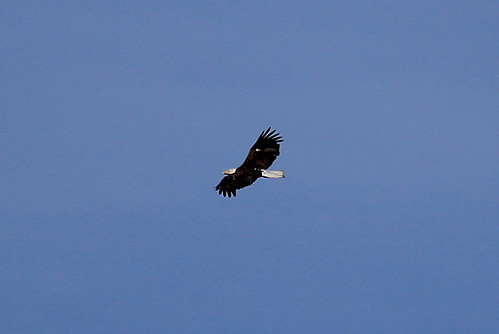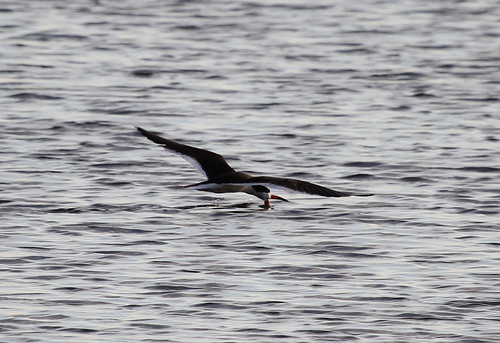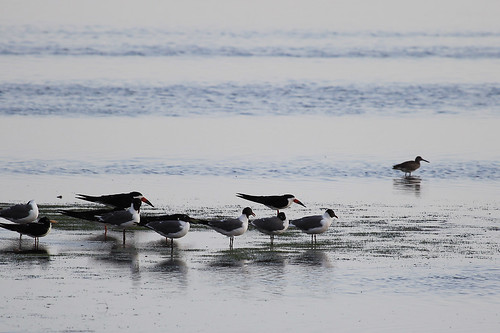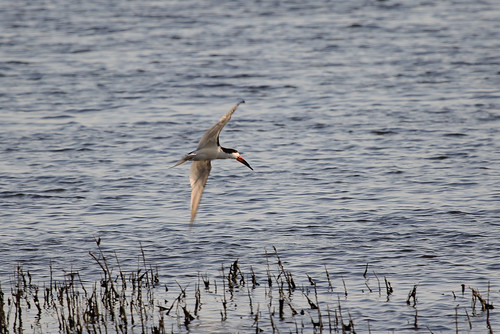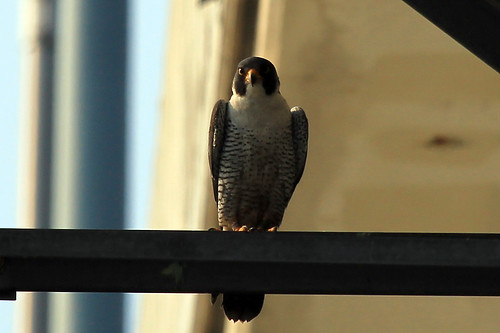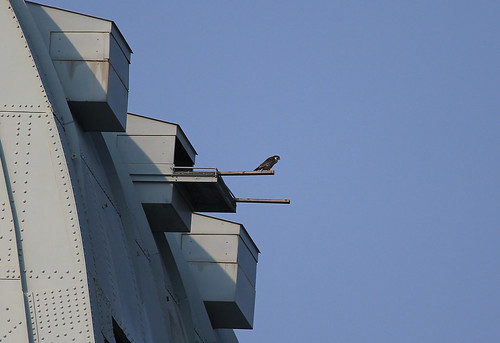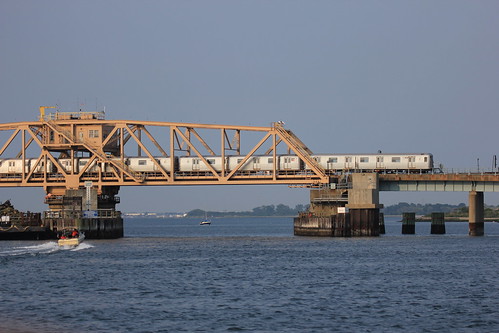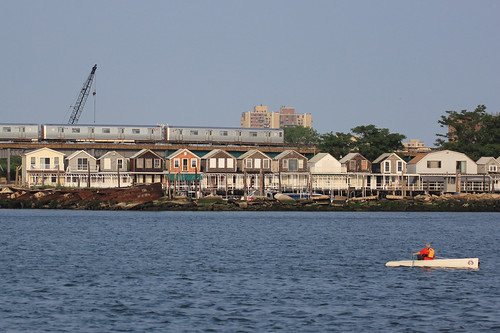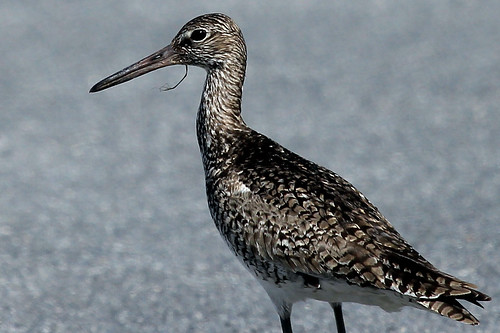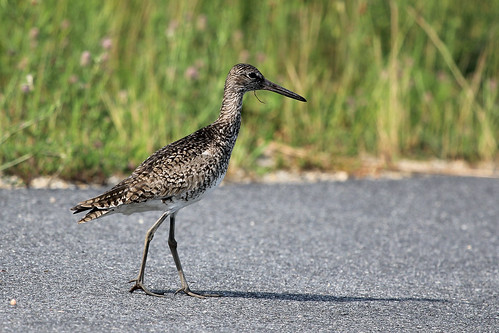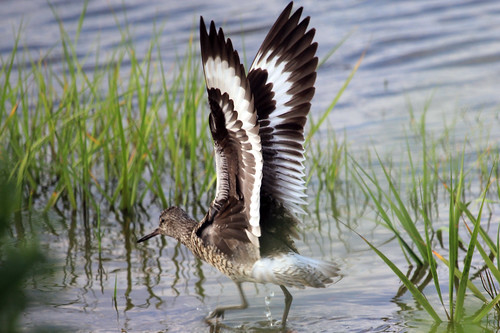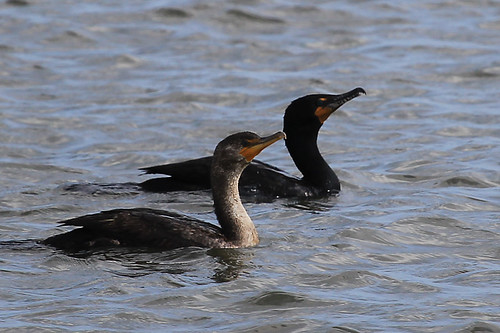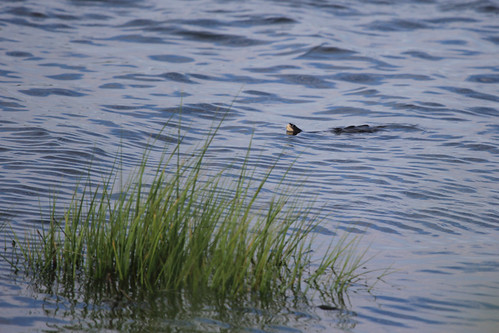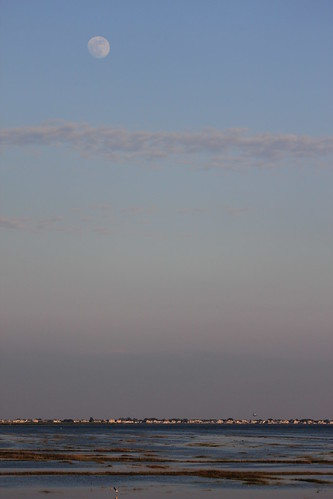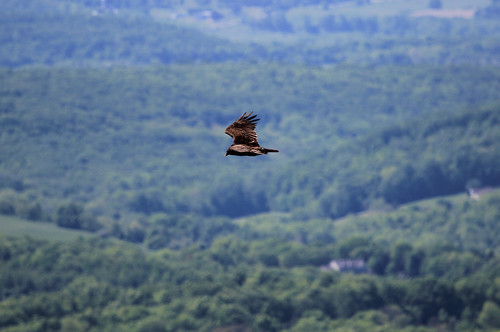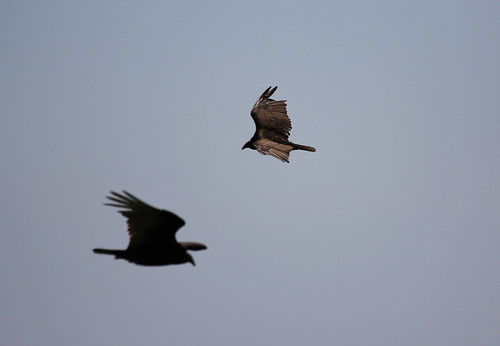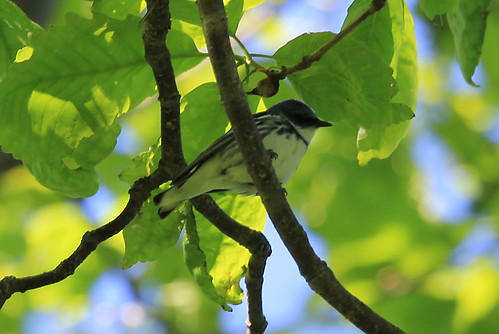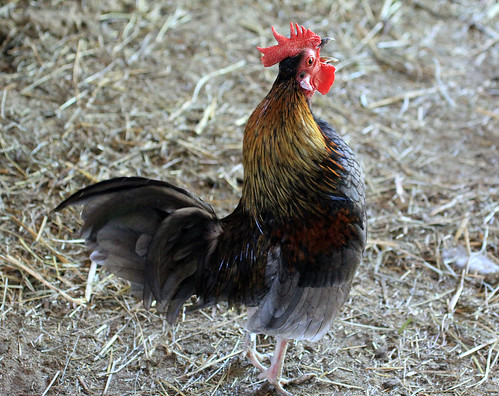Horseshoe crab is probably the most perfect organism that ever existed on Earth. It first appeared about 400 million years ago, and has not changed much since then. It stopped evolving because it didn't need to anymore! One part of their behavior cycle is the mating ritual that happens during full and new moons in late May. The horseshoe crabs (actually more related to spiders than other crabs) come out from the water onto beaches, mate, and leave their eggs (which the birds then eat!). I took these pictures in Jamaica Bay, shortly after the high tide has receded.
Ready to come out of the water:
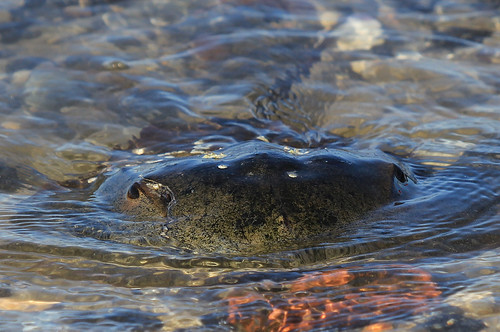
The two in the back are starting their courtship:
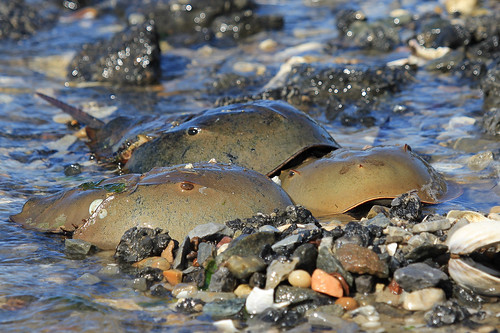
The male is smaller than the female, because it doesn't have to develop or carry the eggs.
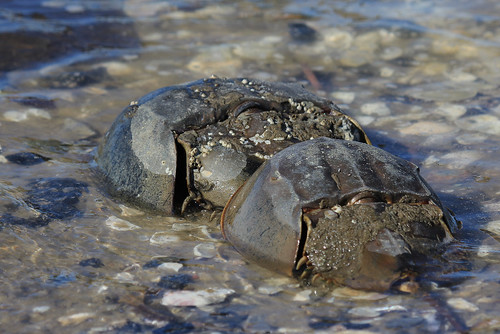
Still mating, even after the tide has gone down:
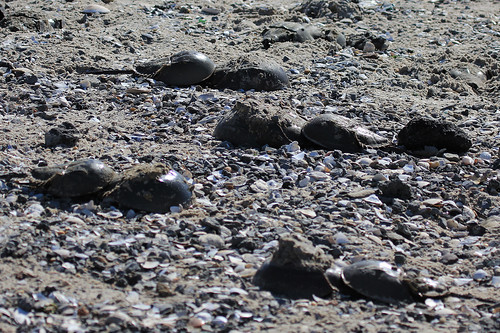
They can survive out of the water for a few hours, provided their gills remain moist. (We turned this one back on his legs after we took the picture.)
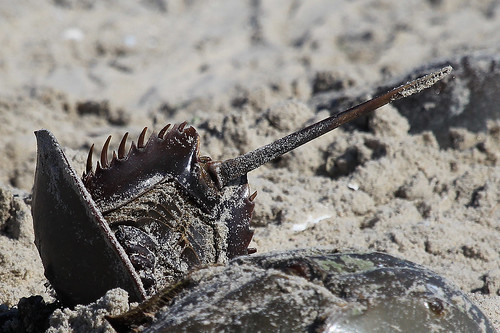
You can guess the age of the crab by how large the barnacles and muscles are on its shell. They shed their shell once in a while, but much more frequently when they are young. For the muscles to grow to the size they are on this female crab, they had to be growing for a few years. Which means she hasn't molted in 2-3 years, and that means she is probably 25-30 years old.
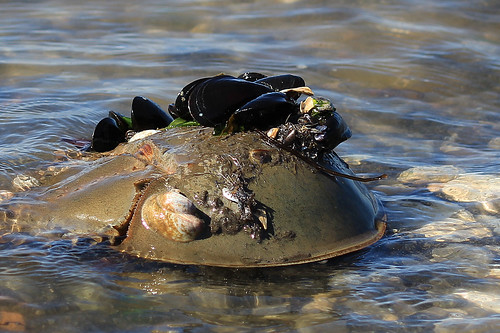
The horseshoe crab sea:
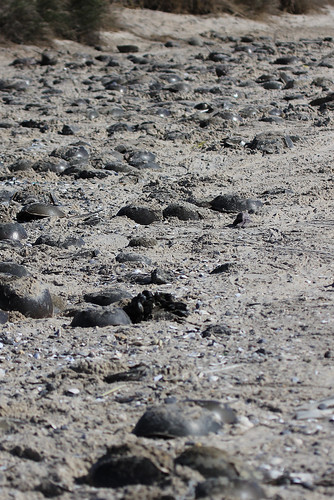
The crabs have light-detecting patches on their shells, in addition to the two eyes. Those allow them to detect where the water is once they are out on the beach, and then crawl to it:
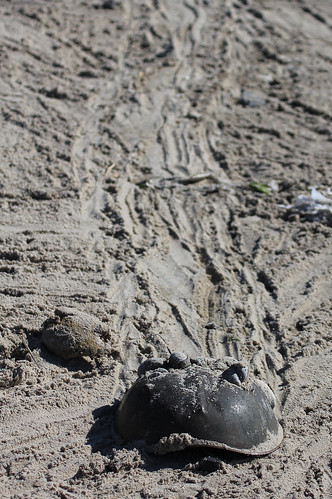
What the whole kefuffle is about: horseshoe crab eggs:
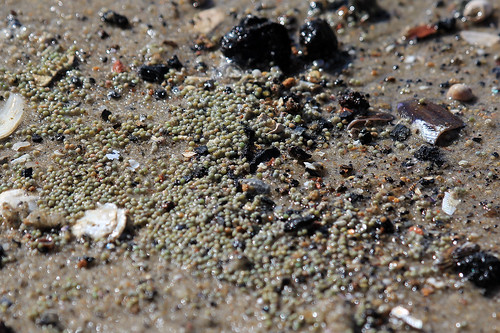
Which the birds then promptly eat. (Only 2 eggs of about 60,000 on average become adult crabs.)

